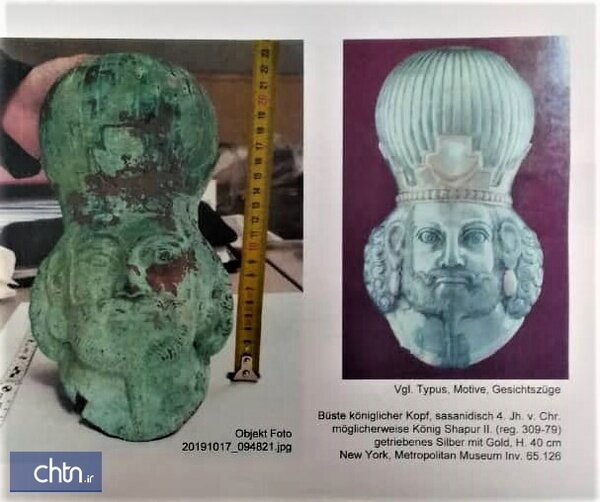Iran calls for return of relics confiscated in Austria

TEHRAN – Iran’s Ministry of Cultural Heritage, Tourism, and Handicrafts has called for the return of relics, which were discovered from a safety-deposit box of a bank in Austria last year.
“Based on national lawd and international pacts such as the 1970 UNESCO Convention, to which Austria is a signatory, it is required that the items seized to be returned to the Islamic Republic of Iran as soon as possible,” CHTN quoted Mohammad-Hassan Talebian, deputy minister for cultural heritage affairs, as saying on Saturday.
“According to experts’ assessments and available photos, the [seized] relics certainly belong to the geographical and historical realm of Iran [and they date back to the] first millennium BC, as well as the Achaemenid and Sassanid eras,” the official noted.
“Among the above-mentioned objects, there are examples of bronze objects known as Lorestan’s pins, similar examples of which are being kept at the museums of Reza Abbasi and the National Museum of Iran.”
“The images [that we have been received from the confiscated objects] show a metal rhyton in the Achaemenid style, which its counterparts are found in the National Museum of Iran and the Metropolitan Museum of Art in New York; and a bronze headpiece of the Sassanid King (Shapur II), the original of which is made of silver being kept at the Metropolitan Museum of Art in New York….,” he explained.
“It seems that a number of these items, such as the last two, are counterfeit, given the images sent yet,” he said. “But any careful expert commentary requires observing the original.”
Elsewhere in his remarks, Talebian noted: “Any careful and expert commentary on their authenticity is required to observe the original works or receiving high-quality images of them.”
“In Azar 1398 (the Iranian month falling on November 22 to December 21, 2019) through a telephone call from the head of Iran’s Interpol, the Ministry of Cultural Heritage, Tourism and Handicrafts was informed of the discovery and seizure of some ancient objects of Iranian origin form a safety-deposit box of a bank in Austria.”
“Correspondence has been made with the Interpol and the general directorate of international affairs of the judiciary regarding the announcement of expert assessments and the receiving accurate information on the number of confiscated items, as well as high-quality images of them.”
In April, Second Brigadier General Hadi Shirzad, the head of the Iranian Police’s international department, announced that the police “in a European country” have seized a cache of ancient Iranian relics hidden at a safety-deposit box of a bank.
“According to the Interpol, one of the banks in a European country intends to renovate and open the safe-deposit boxes inside the bank (previously informed the holders of the safe-deposit boxes that the bank intended to open them). Then, the bank finds out that one of the holders keeps some antiques of gold and silver in his/her box,” the senior police official added without mentioning the name of the European country.
“In coordination with the judicial authorities and with their assistance, a lawsuit has been prepared, translated, and submitted to that country. We are following the case through Interpol and diplomatic channels until the relics are back home,” Shirzad said.
The Achaemenid [Persian] Empire was the largest and most durable empire of its time. The empire stretched from Ethiopia, through Egypt, to Greece, to Anatolia (modern Turkey), Central Asia, and to India.
The Parthian Empire, also known as the Arsacid Empire, was a major Iranian political and cultural power in ancient Iran. The Parthians largely adopted the art, architecture, religious beliefs, and royal insignia of their culturally heterogeneous empire, which encompassed Persian, Hellenistic, and regional cultures.
The Sassanid era (224 CE–651) is of very high importance in Iranian history, under which Persian art and architecture experienced a general renaissance.
AFM/MG
Leave a Comment